There are a few different high-quality optics out there on the market that are known for their utility in long-range shooting. Among these optics, there are a few that are known as “the best.” These are known as such because of their reputation among shooters for their precision, feature set, and optical quality. Zero Compromise Optic is a relatively new company that is shooting (pun intended) for the top spot among their competition, and they have just the product to do it: the ZC527. This rifle scope is packed with features, including locking windage and elevation turrets, rotation indicators, a highly efficient and clutter-free, first focal plane reticle, an illumination system with intelligent on/off programming, incredible glass quality and it is all assembled with the highest regard for low tolerance and precision.
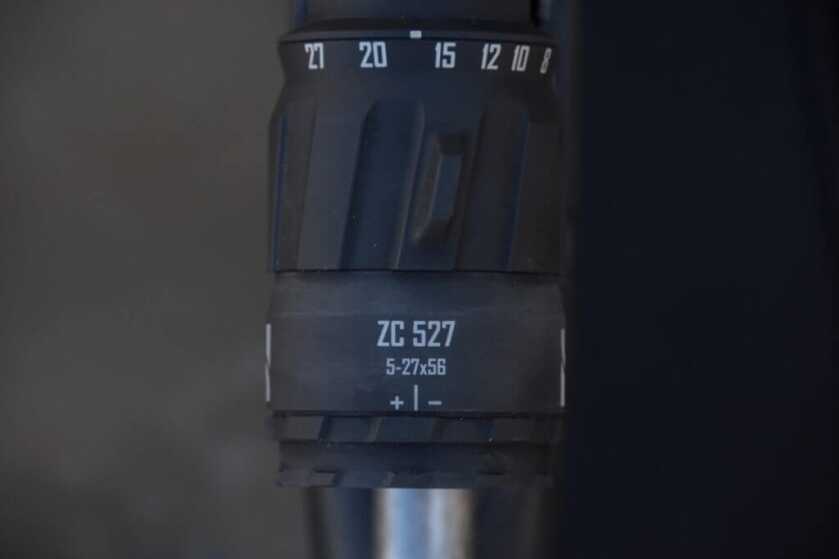
Because of the company’s owner’s drive to make the perfect optic, this riflescope has a price tag to reflect what it takes to make it, coming in with a $3,600 MSRP. There is “zero compromise” made when building these rifle scopes (hence the name I assume), so only the best technology is used and the highest quality product is built. I asked Jeff Huber once, the co-owner of ZCO, if he had any interest in building a budget line of optics like many companies do. With a look of disgust, he said, “No. If I were to sacrifice on quality for anything, ZCO would cease to be what it is.” In hindsight, I wouldn’t want any other answer and this one will always stick with me.
Interesting Features of the ZC527
One of the most important parts of a rifle scope is its turrets. The ZC527 has incredibly tactile locking turrets; they glide up into the unlocked position, ratchet around to your desired elevation and then glide back down, locking in place. The knurling (if you can call it that) is different than almost any other existing products out there. It is not designed to increase friction between the metal and your skin like most. Instead, they have knobby protrusions that are easy to apply leverage to with your fingers. This solves the problem of possibly being too aggressive and tearing up your fingertips when operating the turret, while still providing maximum ergonomics and controllability.
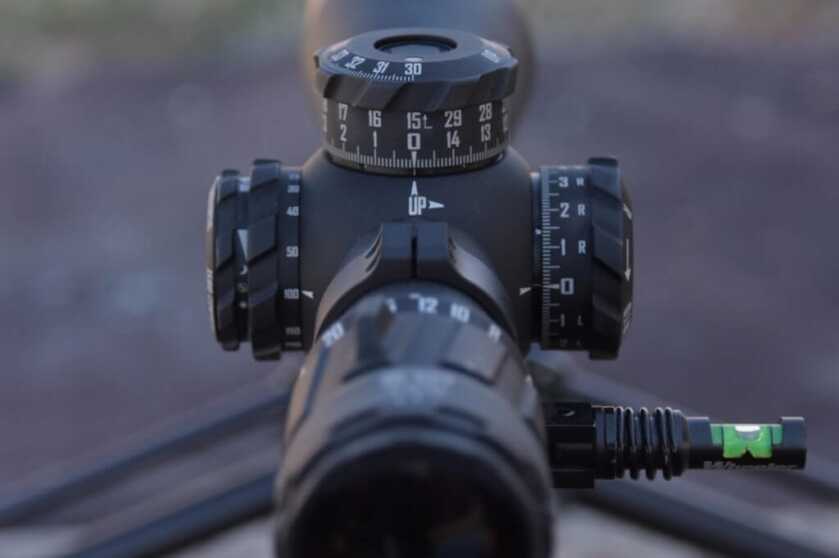
When rotating the turrets (both elevation and windage), they feel like a ratchet. They audibly click and physically snap into place at every stop, even when being twisted quickly. I know I already said it, but I want to re-emphasize this fact because it just feels so damn good. These positive detents and crisp clicks are due to not one, but two clickers spaced on opposite sides of the turrets. These clickers are not just detents that wear in one spot across the internal ridges on the turret. Instead, they make full contact and rotate with the turret, maintaining an even wear pattern for maximum longevity.
Still discussing the turrets, they are very easy to read. Each marking is thin, precise, and very clear to see. There is an indexing mark under the turret that becomes visible when you lift the turret to unlock it. This adds to the ease of reading your adjustments. And of course, the rotation indicator, which allows you to keep track of your elevation and the Return 2 Zero (R2Z) stop which makes dialing to zero super easy and reliable. Also, adjusting your zero is super easy, requiring only 2 different set-screws to be loosened, the turret rotated and then the set-screws to be re-tightened.
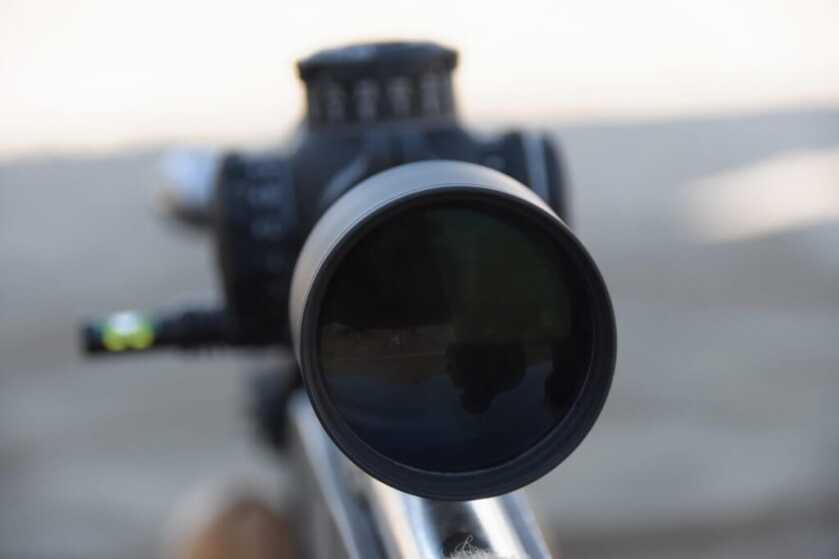
Moving on, the illuminated reticle system, which is co-located with the parallax knob, has a rheostat type of adjustment for near infinite brightness settings between night-vision compatible levels and its maximum brightness. The maximum is not daylight-bright, but this is not a red dot. This illumination can be changed between red or green at the flip of a switch under the battery cap, and the Automatic Illumination Adjustment (AIM) can be turned on or off as well, in the same manner.
The illumination is also designed to turn on or off depending on the state of the rifle. AIM settings will automatically turn the illumination off when the scope angle goes past 45 degrees to either side or 75 degrees up or down. AIM will also shut off when there is no motion for 3 minutes and automatically turn back on when motion is detected. AIM will also shut down if the illumination dial hasn’t been adjusted for 2 hours and will automatically return to the last illumination level when it is adjusted slightly. On top of all that, as an indication of the battery life, the illumination will flash 3 times each minute once it is turned on and there are only about 2 hours of battery life left, so no more guessing when to replace batteries.
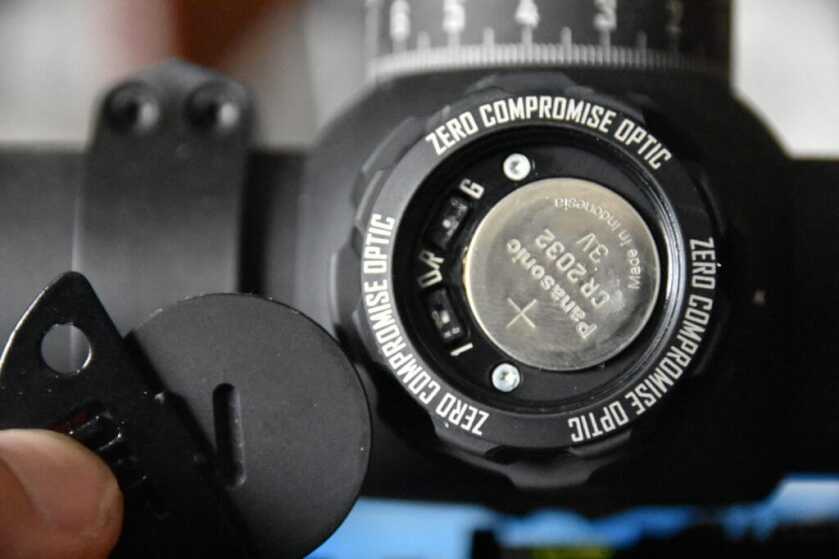
The parallax that is located in the same area is extremely fine to adjust and the distances indicated on this knob correlate perfectly with the correct parallax setting at those distances. This adjustment was so precise on maximum magnification settings that I could guess some unknown distances by just focusing the rifle scope.
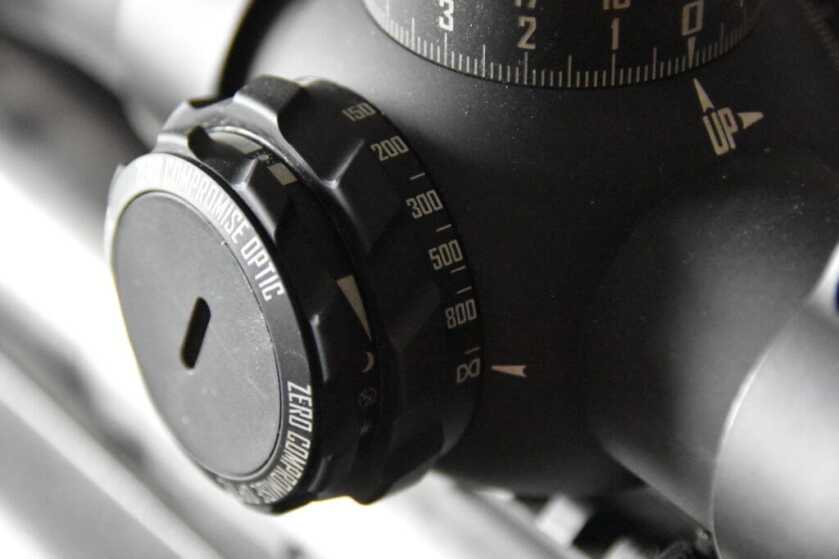
Some smaller, less noticeable features on this riflescope include a fast-focus eyepiece, integrated magnification ring throw lever, 36mm main tube (which allows a staggering 35 Mils of elevation and 21 Mils of windage) and 56mm objective lens that transfers a ton of light to the eye.
Performance in the Field
Before I dive into the details, I want to point out that I found absolutely no negatives when testing this optic, which is incredible. Now, I went out to the range with the optic bore-sighted, got it zeroed within a couple of shots and then immediately performed the turret tracking test, which I’ll share details on in a second. Then I let that gun ride around in the passenger seat of my pickup for several weeks, which I have found is typically pretty hard on rifle scopes with them banging against the door and having torque placed on them and their mounts for lengthy periods of time, and then went out and shot some more at the range. The optic held perfect zero and then went on to perform for some long-distance shooting.
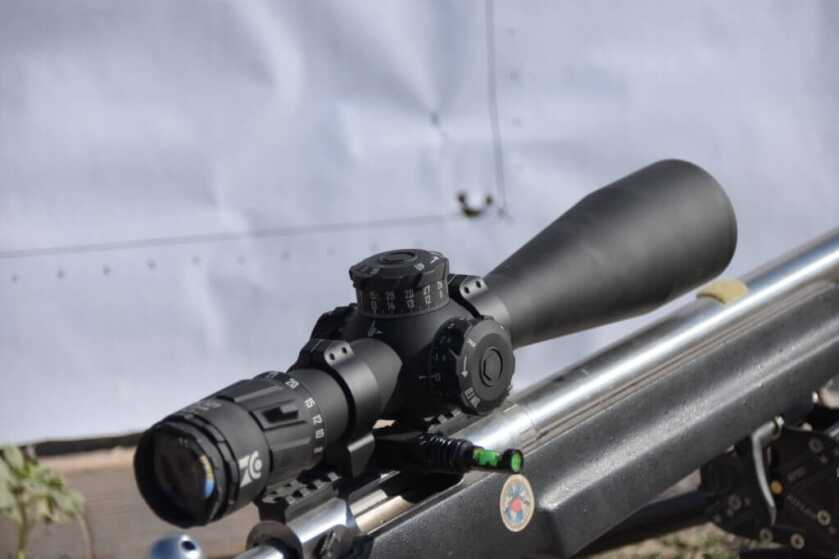
The accurate color rendition and clarity is scary good if that can be a quantitative measurement. Typically, the image color changes between your bare eye and then looking through the optic, but this scope created a perfect, zoomed-in replica of what I would see with my own eye. The image is even clear and crisp all the way to the edges of the FOV. Sadly, I attempted to capture an accurate representation of what I was seeing using my camera, but I was unable to and thus feel it would be wrong to share an inaccurate image. This is one of those things you just need to see for yourself to truly appreciate.
For both zeroing the riflescope and for making long-range shooting adjustments, the MPCT 2 reticle came in handy with its clever combination of fine and course Mil values and drop/wind holds all while keeping my field of view open and readable. I do not like cluttered reticles, but this was the perfect balance of functional and clean.
Turret Tracking Accuracy
As with all of my rifle optics tests, I checked the most important aspect of the ZC527 (in my opinion) using a tall target test in order to determine the scope’s tracking accuracy. The first step in this test is to mount the optic on the gun using a bubble level and plumb bob. This has to correlate to a rifle mounted bubble level which will be used in the field to level the optic. Next, I take a gridded target (with 1-inch squares in my case). This helps me level the target while in the field for the test. It is important to use a precise rifle for this test to minimize any kind of error. For this purpose, I used my Savage target rifle with criterion barrel chambered in 308 Winchester. For ammunition, I used some hand loads pushing 185 grain Berger juggernaut OTM tactical projectiles, Lapua brass, and Varget rifle powder.
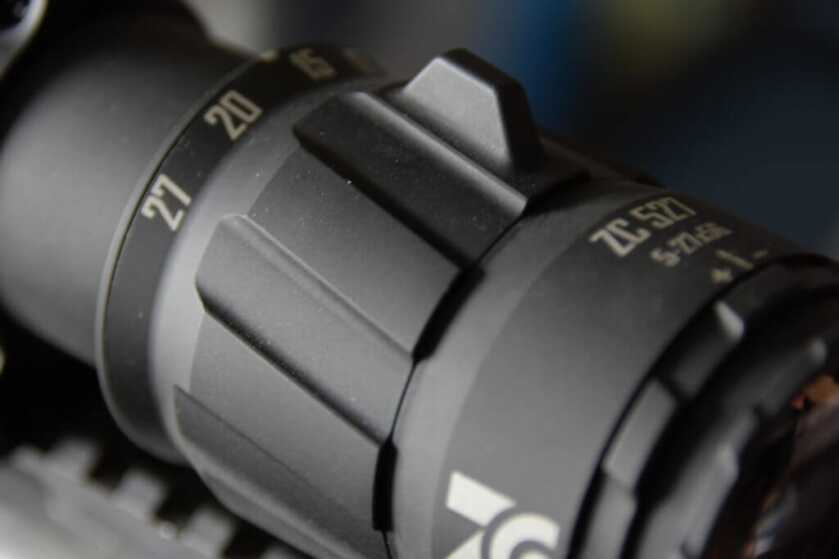
Next, I set up my shooting position about 100 yards away and then laser rangefind the distance with multiple rangefinders to confirm the range. For this purpose, I use a Leupold RX2800 TBR/W and confirm with a Leica 1600 B. I determined the distance to be 102 yards using this method. This distance will then be used later in my math to determine the tracking accuracy of the optic.
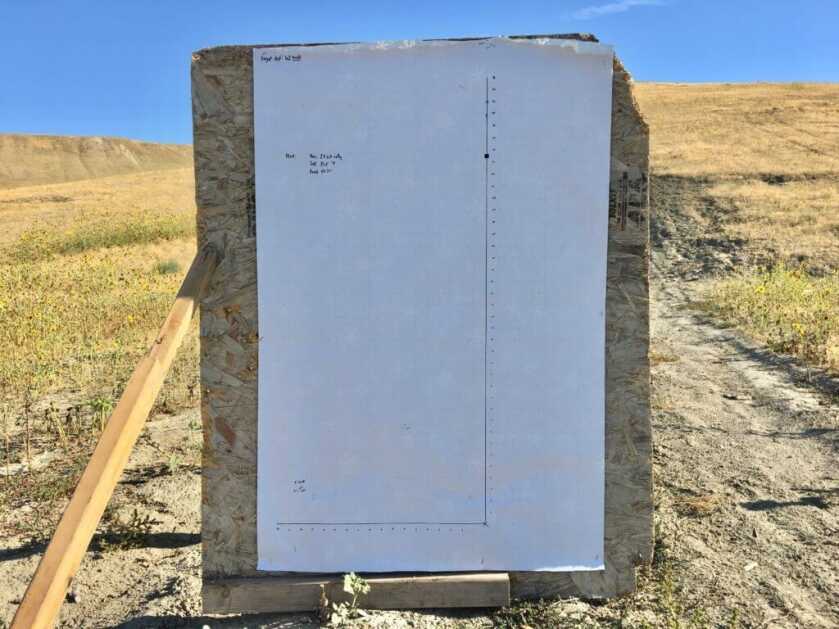
From here, I shoot. In this test, I fired 3 rounds at my point of aim at the bottom center of the target. Next, I dialed up 10 Mils exactly on the turret and fired a 3 shot group while aiming at my original point of aim, all while keeping the gun level. Immediately after, I dialed back down 10 Mils and fired a 3 shot group in a similar fashion. The distance between these two groups will be used to check the tracking accuracy of the elevation turret of the ZC527. Any deviation from my vertical line will also be noted in the test.
In this same string of fire, I then dialed the windage to the left 4.4 Mils and fired a 3 shot group. Immediately after I dialed back to the right to meet my original zero and fired another 3 shots at the original point of aim. Again, this distance between these two groups will be used to test the tracking accuracy of the windage turret and any deviation under or above the horizontal line will be noted.
The formula I use to draw my conclusions from this test is as follows:
***Distance from target x MRAD value dialed x MRAD to inches conversion factor = expected point of impact in inches***
After measuring the distance between the reference group and test group on the X and Y axis, I found the distances to be 16.1875” and 36.75” respectively. Using the equation, I found that I should expect the elevation’s distance of travel at 102 yards (confirmed with 2 different rangefinders) to be 36.72” which means that the elevation turret tracked with 99.9% accuracy in my test! Given the number of variables that I cannot control, this is outstanding performance shown by the ZC527.
***102 yards x 10 mil x 0.036 inches/mil*yard = 36.72 inches***
Using the same equation, I calculated the expected distance between the reference group and test group on the X-axis to be 16.1568”. Given that the experimental distance is 16.1875”, this means that the windage turret tracked with 99.8% accuracy in my test. Again, another impressive result from the ZC527.
***102 yards x 4.4 mil x 0.036 inches/mil*yard = 16.1568 inches***
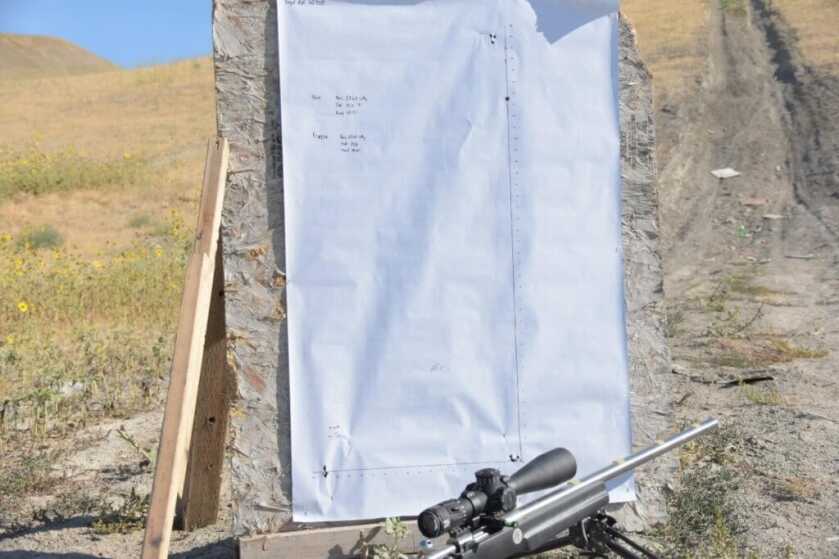
Final Verdict
There was no detail or feature that was overlooked with the ZC527 from Zero Compromise Optics, which I can only expect from a company named as such. This is the highest quality rifle scope that I have ever used and shooting with it was an all-around great experience with its positive clicks, easy to read turrets, clear image, accurate parallax, and overall stunning looks. I would recommend this optic to anyone who is looking to “buy once, cry once,” if they can drop the $3,600 for it. To add on top of all of the other information, you know you are getting a solid product when you buy ZCO because they test each individual rifle scope to leave the factory with extreme trials such as impact, vibration, and thermal expansion and contraction tests.
The international office for ZCO is in Austria and the American office is located in Orofino, Idaho. The optic has a lifetime warranty.
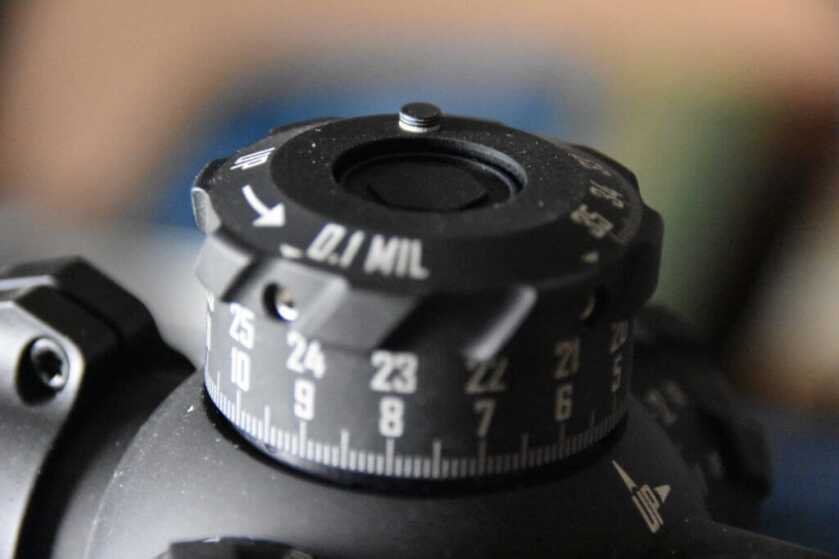
Because of its large magnification range, relatively short length, and reasonable weight, this optic could be deployed on any kind of system from long range hunting rifles to weighted down PRS style rigs. Especially with its night vision compatible illumination settings, we will be seeing these optics in the LEO and military world as well. This, I say because anyone who ever picks up a ZCO to inspect it will never want to go back to anything else again. Because they are still growing, there are few vendors for them currently (that I know of), but I know that if you are interested, CS Tactical or Mile High Shooting Accessories can hook you up.
Specifications:
- 5-27 Magnification
- 56mm objective
- 36mm main tube diameter
- 0.1 mil click values
- 35 mils elevation
- elevation turret rotation indicator
- 21 mils windage
- locking elevation and windage turrets
- 21′-4.5′ FOV @ 100 yards
- 3.54″ of eye relief
- 25-infinity parallax adjustment
- 15.24″ length
- 37.9 ounce weight
- MPCT 1 & MPCT 2 reticles
- first focal plane, illuminated reticle
- fast-focus locking eyepiece
- Made in Austria
- $3,600 MSRP


Valdada uses same glass, is same price and has a 45 mm tube with 56 mm objective. Which one would you want?
The author states that this is the best scope he has ever used, but has he ever used a Tangent Theta?
These scopes are getting very good reviews, but those reporting truly unbiased information are, with almost 100% consistency, rating this scope as a close second to the TT525P.
For that price the illumination should be daylight visible, red dot or not… just saying. And it would be awesome if they included the level/cant indicator within the scope field of view somehow, like a light flashing when it isn’t level, so you don’t have to look away from the target at a bubble level to check cant (see leupold, sig sauer, etc.). THEN MAYBE it would be the perfect scope. 🤔😂
The digital level is a great idea I just wonder if the electronics would be too big to employ in a scope. I have a digital level for carpentry but they had 1.5″x 2.5″ x 4′ of aluminum in which to house the circuitry.
Why in the world do you need daylight visible illumination on a long range scope? It makes zero sense. Only mall ninjas need such a thing. If you’re shooting into a dark background or dark trees… regular illumination does just fine.
I would never trust a digital level.
I bought a US Optics B25 specifically for its internal bubble level…. it’s an actual bubble level set in the eyepiece – not digital. I absolutely LOVE it! I don’t know why more high end scope manufacturers aren’t utilizing this amazing feature! I agree: if Zero Compromise Scopes had this feature, then they might be the best…
Given the insane prices for these precision chassis rifles and high end optics, there must be some great prize money for these LRS competitions. Does anyone know what these matches pay out? Just curious…
What type of glass is used, where is the glass made? Austria? What company produced/made the glass?
It is Schott glass. Google it and that will tell you the rest. The best of the best.
Little place called Schott. Not that it matters. In the end, any of the worlds glass makers can make glass at whatever quality is specced out. In the end, the design and coatings are what make a difference.
I’ve compared this optic to my Tangent Theta… they’re def in the same class. Both exceed say a S&B PMII 5-25.